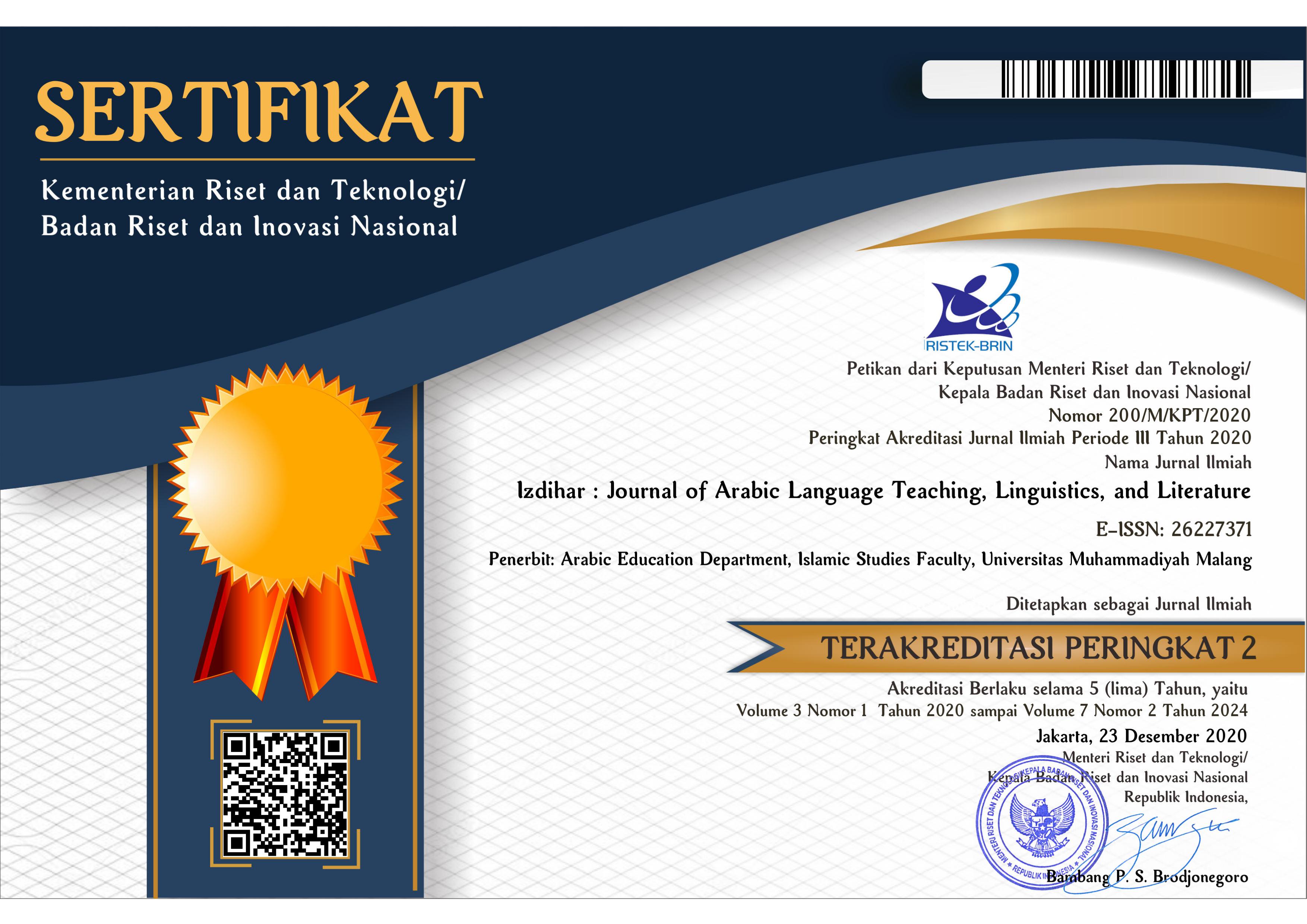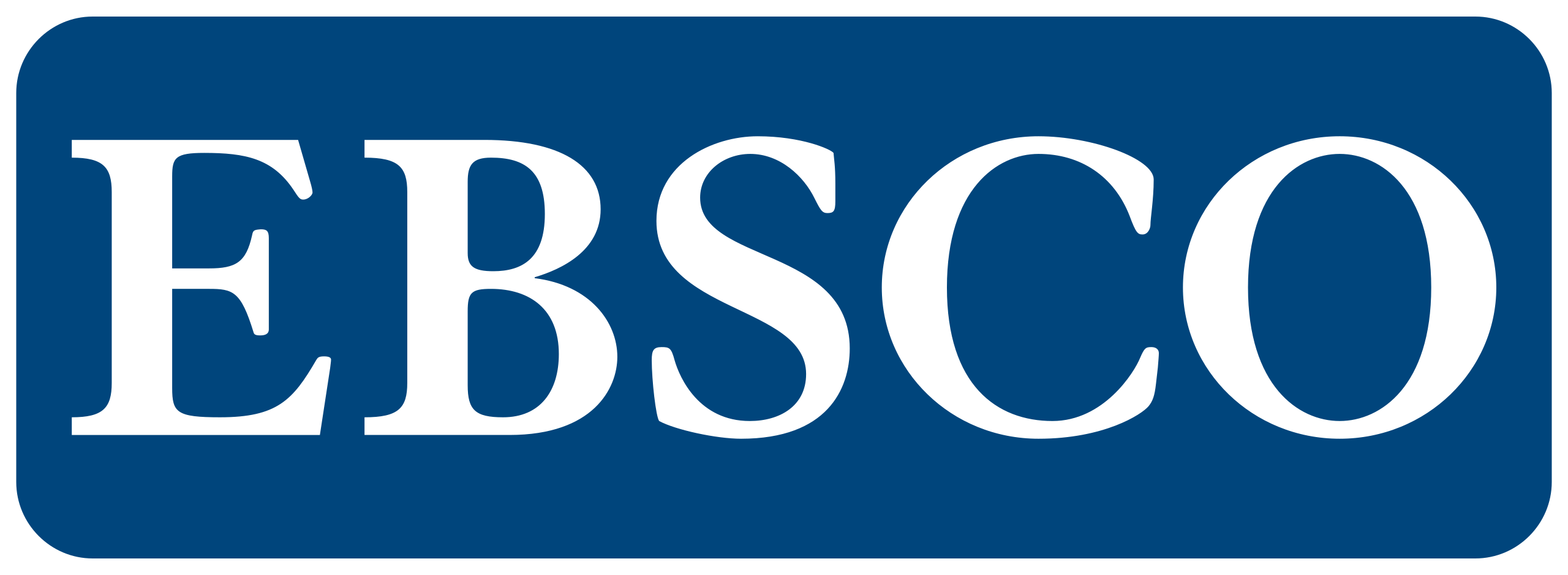Talking Stick Learning Model Assisted by Flashcard Media: Improving Mufradat Learning Outcomes
DOI:
https://doi.org/10.22219/jiz.v7i1.31472Keywords:
Flashcard, learning outcomes, talking stickAbstract
This research aimed to determine the application of the talk stick learning model assisted by flash card media and to determine the level of effectiveness of the talk stick learning model assisted by flash card media in improving mufradat learning outcomes. The study employed a quantitative approach using a one-group pretest-posttest design model. Data were gathered through three methods: (1) watching teacher and student activities during the learning process; (2) using the talking stick model to test what to do before and after; and (3) documenting by gathering research-related documents. The normalcy distribution was used to calculate the One-Sample Shapiro-Wilk Test method, paired sample tests were used to test hypotheses, and N-gain was employed for data analysis. To simplify the process, data analysis was carried out with the help of SPSS 26. This research was conducted at MI Al-Faidizn Buko Poso, Way Serdang class V, totaling 20 students. The research results showed a significance value of 0.000 < 0.05 that Ho was rejected and Ha was accepted, and the N-gain percent value was 85.3492. So the use of the talking stick learning model assisted by flashcard media could improve mufradat learning outcomes.
Downloads
References
Arikunto, S. (2010). Prosedur Penelitian Suatu Pendekatan Praktik. Rineka Cipta.
Asyafah, A. (2019). MENIMBANG MODEL PEMBELAJARAN (Kajian Teoretis-Kritis atas Model Pembelajaran dalam Pendidikan Islam). TARBAWY : Indonesian Journal of Islamic Education, 6(1), 19–32. https://doi.org/10.17509/t.v6i1.20569
Ayu Made Darmayanti, I., & Ketut Adi Kesuma Jaya, I. (2022). Model Discovery Learning Dalam Pembelajaran Menulis Teks Prosedur Siswa Tunanetra Pada Era New Normal. 12, 155–167. https://doi.org/10.23887/jjpbs.v12i2.44466
Darma, B. (2021). Statistika Penelitian Menggunakan SPSS. GUEPEDIA.
Djumingan, S. (2011). Strategi dan Aplikasi. UNM.
Famila, R., & Maunah, B. (n.d.). Pembinaan Ketrampilan Mengajar Sebagai Upaya Peningkatan Kompetensi Guru. Jurnal Koulutus : Pembinaan Terhadap Keterampilan Guru 5 (2), 74-75 https://doi.org/10.51158/koulutus.v5i2.681
Fitrianingsih, R. (2015). Efektivitas Penggunaan Media Video Pada Pembelajaran Pembuatan Strapless Siswa Kelas Xii Smk Negeri 1 Jambu. https://doi.org/10.15294/ffej.v4i1.7793
Hamzah, U., & Mohammad, N. (2014). Belajar dengan Pendekatan PAIKEM: Pembelajaran Aktif, Inovatif, Lingkungan, Kreatif, Efektif, Menarik. PT Bumi Aksara.
Hayat, F. (2021). The Effect Of Education Using Video Animation On Elementary School In Hand Washing Skill. Acitya: Journal Of Teaching And Education, 3(1), 44–53. https://doi.org/10.30650/ajte.v3i1.2135
Kharis, A. (2019). Upaya Peningkatan Keaktifan Siswa Melalui Model Pembelajaran Picture and Picture Berbasis IT pada Tematik. 7(3). https://doi.org/10.23887/jjpgsd.v7i3.19387
Kurniasih, I., & Sani, B. (2016). Ragam Pengembangan Model Pembelajaran untuk Peningkatan Profesionalitas Guru. Kata pena.
Marni, & Yusuf, M. (n.d.). Penggunaan Metode Talking Stick untuk Meningkatkan Maharat Al-Kalam dalam Mata Pelajaran Bahasa Arab di kelas X3 MAN 2 Model Makassar. 2015, 2. http://journal.uin-alauddin.ac.id/index.php/auladuna/article/view/869
Mulyawati, Y., & Purnomo, H. (2021). Pentingnya Keterampilan Guru Untuk Menciptakan Pembelajaran Yang Menyenangkan. 3(2). https://doi.org/10.33654/pgsd.v3i2.1317
Nata, A. (n.d.). Manajemen Pendidikan: Mengatasi kelemahan Pendidikan Islam di Indonesia (4th ed.). 2012.
Prastowo, A. (2015). Menyusun Rencana Pelaksanaan Pembelajaran (RPP) Tematik Terpadu. Prena Media Group.
Said, A. (2015). Strategi Mengajar Multiple Intelligences Mengajar Sesuai Kerja Otak dan Gaya Belajar Siswa. Prenada Media Group.
Saryantono, B., & Elvadola, C. (n.d.). Penggunaan Metode Talking Stick Untuk Meningkatkan Hasil Belajar Siswa Pada Materi Sumber Daya Alam Di Indonesia Muatan Ilmu Pengetahuan Alam Kelas Iv Sd Negeri 1 Langkapura Tahun Pelajaran 2021/2022. https://www.stkippgribl.ac.id/eskripsi/index.php/pgsd/article/view/573
Sizi, Y., Bare, Y., & Galis, R. (2021). Pengaruh Model Pembelajaran Kooperatif Tipe Talking Stick Terhadap Keaktifan dan Hasil Belajar Kognitif Peserta Didik SMP Kelas VIII. Spizaetus: Jurnal Biologi dan Pendidikan Biologi, 2(1), 39. https://doi.org/10.55241/spibio.v2i1.30
Sugiyono, S. (2019). Metodologi Penelitian Kuantitatif dan Kualitatif dan R & D. alfabeta.
Suprijono, A. (2012). Cooperative Learning: Teori dan Aplikasi Paikem. Pustaka Pelajar.
Susilana, R., & Riyana, C. (2009). Media Pembelaaran Hakikat, Pengembangan, Pemanfaatan Dan Penilaian. CV Wacana Prima.
Tasbihah, N. (n.d.). Upaya Meningkatan Penguasaan Mufradat Model Take And Give Berbantukan Media Power Point. 2. https://e-proceedings.iain-palangkaraya.ac.id/index.php/PPGAI/article/view/1090
Wahyuni, S. (2020). Penerapan Media Flash Card untuk Meningkatkan Hasil Belajar Tema “Kegiatanku.” Jurnal Ilmiah Sekolah Dasar, 4(1), 9. https://doi.org/10.23887/jisd.v4i1.23734
Downloads
Published
How to Cite
Issue
Section
License
Copyright (c) 2024 Luthfi Qolbi Azzahra Wibowo, Iis Dahlia, Yeni Lailatul Wahidah, Agung Setiyawan, Umi Hijriyah, Ahmad Arifin B. Sapar

This work is licensed under a Creative Commons Attribution-ShareAlike 4.0 International License.
Copyright Notice
Authors who publish with this journal agree to the following terms:
- Authors retain copyright and grant the journal right of first publication with the work simultaneously licensed under a Creative Commons Attribution-ShareAlike 4.0 International License that allows others to share the work with an acknowledgment of the work's authorship and initial publication in this journal.
- Authors are able to enter into separate, additional contractual arrangements for the non-exclusive distribution of the journal's published version of the work (e.g., post it to an institutional repository or publish it in a book), with an acknowledgment of its initial publication in this journal.
- Authors are permitted and encouraged to post their work online (e.g., in institutional repositories or on their website) prior to and during the submission process, as it can lead to productive exchanges, as well as earlier and greater citation of published work (See The Effect of Open Access).
Copyright (c) 2019 Izdihar : Journal of Arabic Language Teaching, Linguistics, and Literature

This work is licensed under a Creative Commons Attribution-ShareAlike 4.0 International License.


















